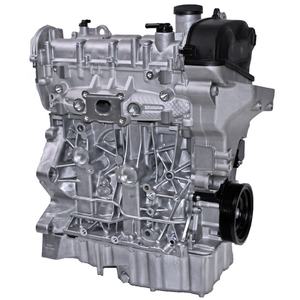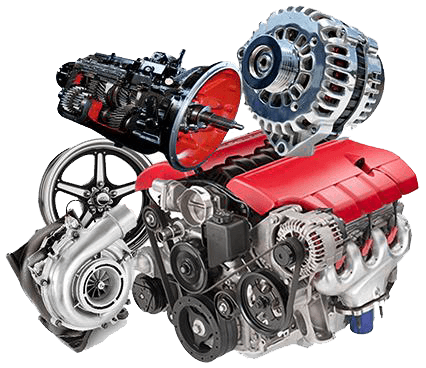Opel Corsa Engine: Every Little Thing You Required to Know Prior To Buying
Opel Corsa Engine: Every Little Thing You Required to Know Prior To Buying
Blog Article
Exploring the Inner Workings of a Compact Lorry's Engine System
As chauffeurs, we commonly take for provided the detailed procedures that occur within the boundaries of our lorry's engine system. The portable yet intricate equipment that thrusts us onward is a wonder of engineering precision and coordination. From the controlled surges in the burning chamber to the precise timing of fuel shot, every part plays a critical function in the smooth operation of the engine. In this exploration of a portable automobile's engine system, we will unravel the internal functions of this mechanical symphony, shedding light on the enigmas that drive us ahead on our daily trips.
Burning Process Review
The combustion procedure in a small lorry's engine system is an important mechanism that effectively converts fuel right into energy to power the automobile. This process happens within the burning chamber of the engine, where fuel and air mix, spark, and create controlled explosions. The burning procedure contains 4 major stages: consumption, exhaust, power, and compression.
Throughout the intake stage, the piston relocates downward, pulling in a mixture of air and gas into the burning chamber. The next phase, compression, includes the piston relocating up, pressing the air-fuel blend to increase its effectiveness. Consequently, in the power phase, the ignition system ignites the pressed mixture, leading to a rapid growth of gases that forces the piston pull back. This downward motion creates the power required to drive the vehicle. Ultimately, in the exhaust stage, the scorched gases are removed from the burning chamber through the exhaust valve, preparing the chamber for the following cycle. This cyclic combustion procedure is basic to the operation of a small lorry's engine system, guaranteeing reliable power conversion for propulsion.
Piston and Cylinder Interaction

The piston's specific fit within the cyndrical tube is vital for preserving optimal compression and preventing power loss throughout combustion. Tight clearances in between the piston and cyndrical tube walls ensure reliable securing, allowing the piston to relocate efficiently without allowing gases to leakage past. Correct lubrication is likewise vital to lower friction and wear in between these elements, enhancing long life and performance.
Furthermore, the layout and materials made use of in producing the piston and cylinder effect engine efficiency and durability. Modern engines usually utilize light-weight yet long lasting materials like light weight aluminum alloys for pistons and cyndrical tube liners to lower inertia and improve thermal performance. In general, the unified interaction in between the piston and cylinder is essential to the engine's performance and overall efficiency.
Gas Injection System Performance
Fuel injection systems in compact automobile engines play a critical role in exactly supplying gas to the combustion chamber for regulated and efficient ignition. The gas injection system operates by injecting fuel into the burning chamber at the ideal minute throughout the engine's operation (opel corsa engine). This exact timing makes certain that the gas blends equally with the air for correct combustion, bring about boosted fuel performance and decreased emissions
There are primarily 2 sorts of gas shot systems used in compact car engines: port gas injection (PFI) and straight gas injection (DFI) PFI systems inject gas into the intake port you could check here before the intake shutoff, while DFI systems infuse fuel directly into the combustion chamber. Both systems have their advantages, with DFI offering better gas atomization and PFI supplying a more cost-efficient service.
Understanding Engine Cooling Systems
Efficient operation of a portable car's engine counts greatly on the effectiveness of its cooling systems. Engine cooling is important to prevent overheating, which can bring about major damage and lowered performance. The air conditioning system in a compact vehicle typically includes several elements collaborating to control the engine temperature level. One crucial part is the radiator, which makes use of coolant to absorb warmth from the engine. As the hot coolant moves via the radiator, it launches warm right into the air, cooling prior to returning to the engine. The water pump distributes the coolant via the engine and radiator, making sure a constant flow to manage temperature. In addition, the thermostat assists manage the coolant flow to preserve optimal engine temperature. Some vehicles additionally have cooling fans that turn on when extra air conditioning is required, such as during rush hour or heat. Comprehending these engine cooling mechanisms is important for preserving the efficiency and longevity of a small lorry's engine system.

Exhaust System Elements Explained
The ideal functioning of a portable vehicle's engine air conditioning mechanisms depends on a complementary system understood as the exhaust system, which consists of numerous essential parts for ensuring effective exhausts and engine performance. The exhaust manifold gathers exhaust gases from the engine's cyndrical tubes and routes them to the catalytic converter.
One important element of the exhaust system is the oxygen sensor, which monitors the oxygen degrees in the exhaust gases to assist control fuel intake and ensure optimal engine performance. opel corsa engine. Additionally, the resonator might be existing in some exhaust systems to decrease noise levels. In general, the exhaust system plays a vital duty in keeping engine efficiency, reducing harmful exhausts, and ensuring a quieter driving experience for small automobile owners

Final Thought
Finally, the portable vehicle's engine system is an intricate combination of components that collaborate to help with the burning procedure, transform fuel into energy, and get rid of waste i was reading this gases. Understanding the inner functions of the engine system, including the piston and cylinder communication, gas shot system, engine air conditioning mechanisms, and exhaust system components, is critical for keeping optimal efficiency and performance of the car.
The combustion process in a portable lorry's engine system is a vital mechanism that efficiently converts gas into energy to power the automobile.Fuel shot systems in compact automobile engines play a vital duty in precisely delivering fuel to the combustion chamber for effective and regulated ignition.There are mostly 2 kinds of gas shot systems made use of in portable automobile engines: port fuel injection (PFI) review and direct gas injection (DFI) Understanding these engine cooling mechanisms is crucial for maintaining the efficiency and longevity of a compact car's engine system.
The ideal functioning of a portable automobile's engine cooling systems depends on a corresponding system known as the exhaust system, which comprises different necessary parts for making sure efficient exhausts and engine efficiency.
Report this page